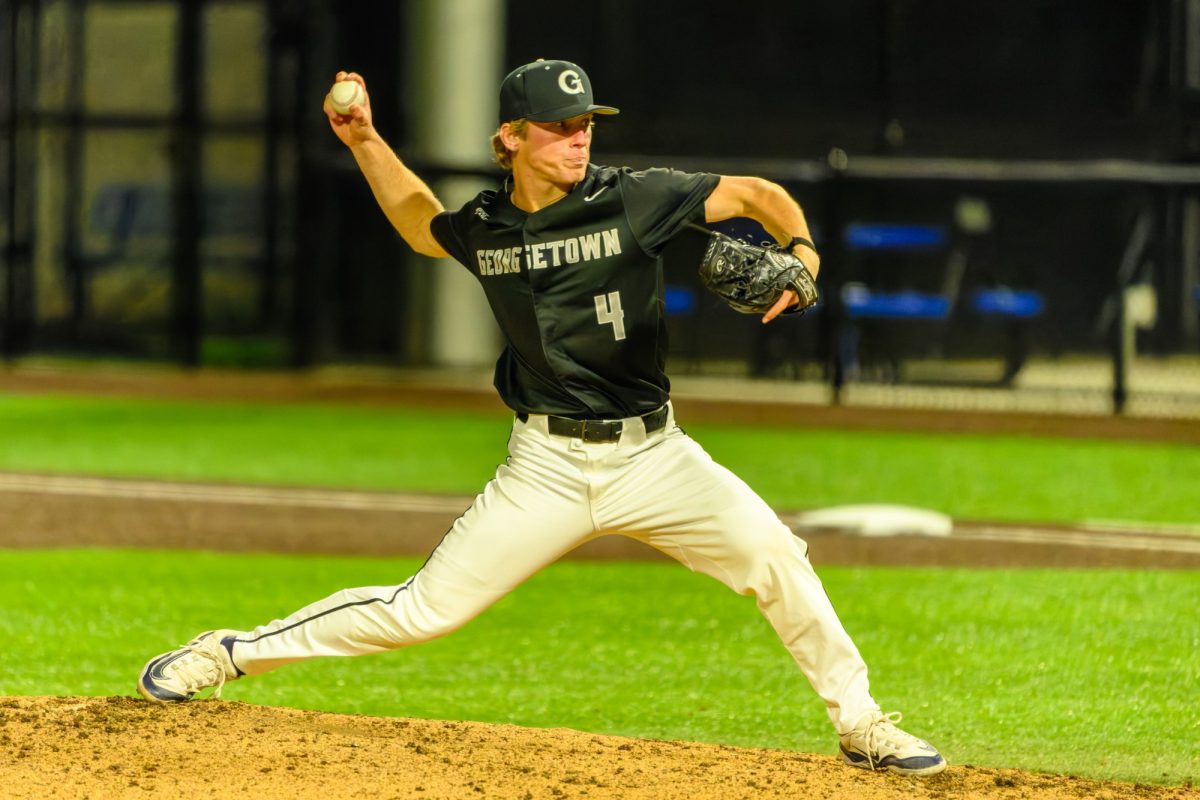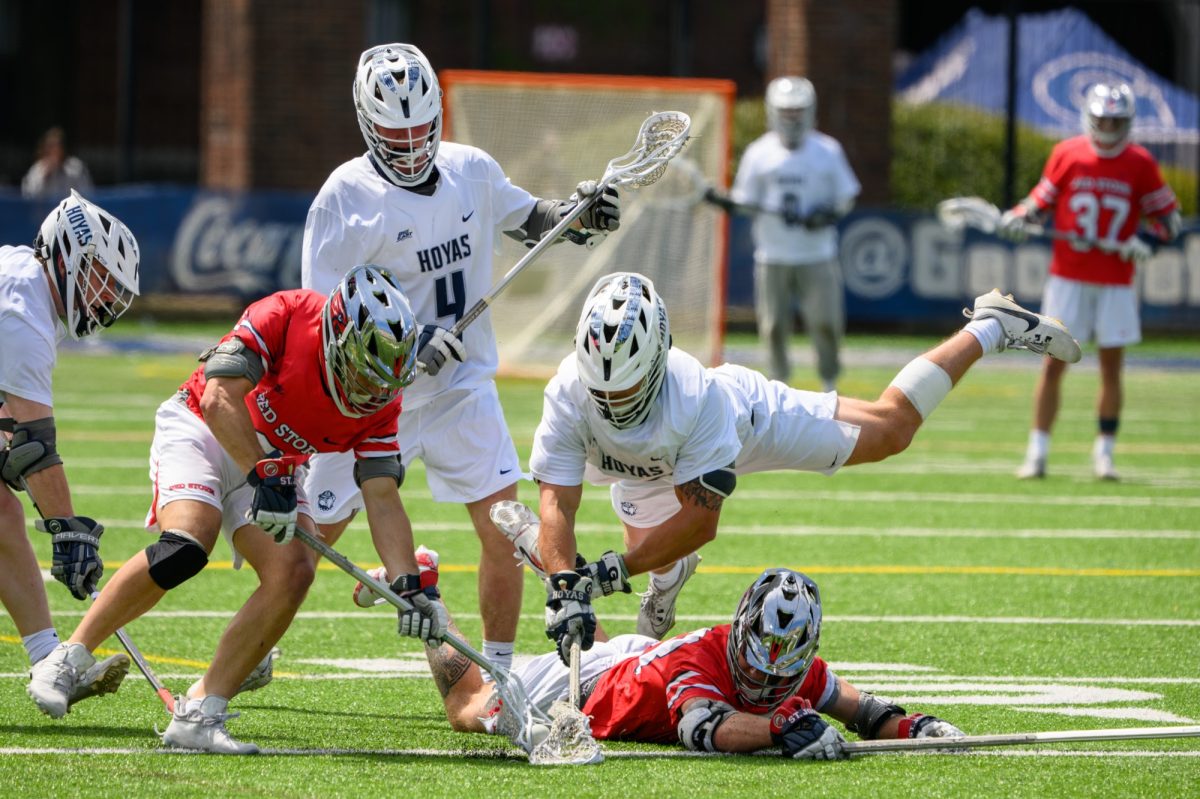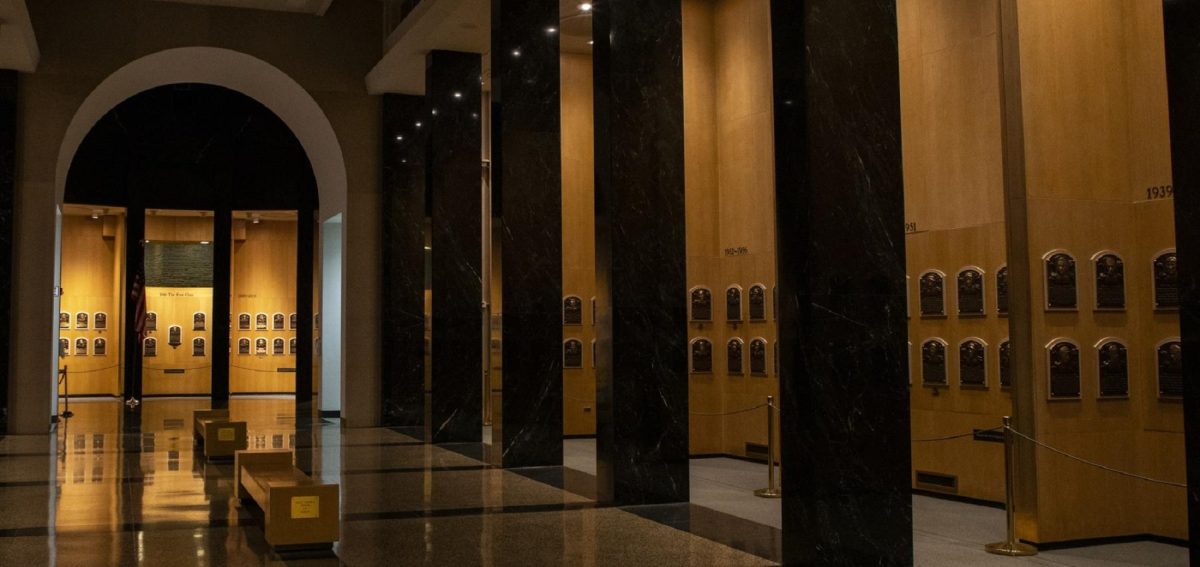On March 25, sophomore center Qudus Wahab shocked Georgetown men’s basketball fans when he announced his decision to enter the NCAA transfer portal. This decision, coming just days after Georgetown’s Big East tournament victory and NCAA tournament appearance, seemed to come out of nowhere. Wahab was a focal point of Georgetown’s game plan, averaging 12.7 points and 8.2 rebounds per game, while receiving guidance from one of the best centers of all time in Head Coach Patrick Ewing (CAS ’85).
While Wahab’s decision to transfer may have been surprising to Georgetown fans, it is part of a larger mass transfer movement this year in NCAA men’s basketball. Over 1,400 men’s college basketball players have entered the transfer portal, according to a national database that allows universities to easily recruit student-athletes looking to change schools for the upcoming season. That number represents nearly 30% of the approximately 4,500 Division I scholarship basketball players. To put that number into perspective, 989 student-athletes entered the transfer portal in 2019. Oakland University men’s basketball Head Coach Greg Kampe anticipates “there will be 2,000 players in the portal” before the next season begins.
This sudden influx of intended transfers begs the question: Why are so many student-athletes leaving their schools this year?
Much of the movement stems from a new NCAA ruling that removes a mandatory one-year ineligibility policy, which had prevented transfer athletes from immediately playing at their new schools. This ruling was finally approved by the NCAA Division I Council on April 14. Now, every college basketball player is eligible to transfer once in their career without having to miss any time on the court.
Despite removing the one-year “sitting out” policy, this new ruling does not provide a full explanation for the sheer number of transfers in 2021. Instead, it is important to take into account another new NCAA rule.
Because of the disruptive effects of COVID-19 on the college basketball season, the NCAA granted an extra year of eligibility to every student-athlete competing this season. Now, seniors who might otherwise have graduated and moved on from college basketball can stay and play an extra year. Whether to pursue one last chance at a conference championship or to earn a graduate degree, many seniors are taking advantage of this opportunity.
This extra year disrupts the natural playing time progression for underclassmen who might have expected significantly more minutes when they originally signed with their school. Now, with the new transfer rule, they can seek a school offering more playing time to showcase their skills.
Take, for example, the case of Cole Swider, a junior forward at Villanova. Swider, who was a consensus four-star recruit in high school, did not start at Villanova and was relegated to less than 9.5 minutes per game of playing time coming off of the bench. While Swider might have been a starter next season as a senior, the return of current star seniors Collin Gillespie and Jermaine Samuels for a fifth year makes this result very unlikely. Instead, Swider will now have the opportunity to be a star at Syracuse University without having to sit out for a year.
In addition to complications from the extra year of eligibility, many top players at middle-tier basketball schools are taking advantage of new transfer rules to showcase their talents at powerhouse programs with the hopes of pursuing a professional career.
Tyson Walker of Northeastern University was a finalist for the Lou Henson Award, which is given annually to the top mid-major men’s college basketball player in the country. After averaging 18.8 points and 4.8 assists as a sophomore point guard while dominating the Colonial Athletic Association, Walker decided to transfer to Big Ten Conference powerhouse Michigan State. Whereas Northeastern has produced just six NBA players in the school’s history, Walker now joins a program where he can showcase his skills against the top players in the country while competing for a national championship, proving his value to NBA scouts.
This transfer flurry will change the way college basketball coaches formulate their rosters to compete at the highest level. Whereas new players would mostly come from high school recruiting, coaches must now learn how to recruit potential transfers or risk falling behind to rival schools.
Baylor University, which just won the national championship, is a prime example of why coaches must learn how to recruit top transfers to their programs. Baylor started two transfer players, including projected lottery pick Davion Mitchell, who began his career at Auburn, and MaCio Teague, who scored 19 points in the national championship game and transferred from UNC-Asheville. In addition to these starters, two of Baylor’s primary role players, Adam Flagler and Jonathan Tchamwa Tchatchoua, started their careers at less competitive schools, such as Presbyterian College, later transferring to Baylor.
Whether it was the NCAA ruling granting immediate eligibility to first-time transfers, an extra year of eligibility for all college basketball players or overlooked stars looking to make a name for themselves, college basketball has seen a record number of transfers in 2021. Now, it is up to NCAA coaches to take advantage of these transfers to create championship-caliber teams. Just look at Baylor.
Brendan Quill is a first-year in the McDonough School of Business. Today in the NCAA appears online every other week.





















